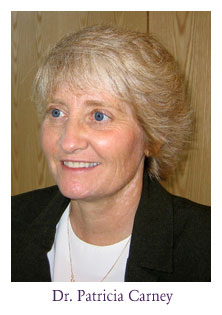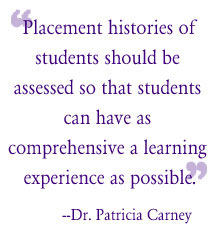
|
For Release: January 4, 2004
Contact: DMS Communications (603) 650-1492
Print Version
Outpatient Medical Settings Differ in Educational Experiences
Hanover, NH - Do academic medical centers and community-based settings offer comparable outpatient learning experiences for medical students? Sometimes, report Dartmouth Medical School researchers in the January issue of Academic Medicine, and they advise that the differences should be taken into account.

The work is one of the first major studies to compare the education that occurs in different medical settings, according to lead researcher Dr. Patricia Carney, associate professor of community and family medicine and assistant dean for medical education research at Dartmouth Medical School. Generally, medical schools teach outpatient medical care through clerkships at varied ambulatory settings, such as academic medical center-based clinics (AMCs), affiliated residency teaching sites (ARTs), and community-based practices (CBPs).
"Medical students may perform all of their ambulatory clerkships in one of these settings, and therefore may have missed crucial learning experiences, as we found that AMCs, ARTs and CBPs differ significantly in the patient symptoms and problems seen as well as the medical procedures and counseling skills that medical students encounter," Carney said. "Placement histories of students should be assessed so that students can have as comprehensive a learning experience as possible."

The researchers began with data collected using a handheld computer system by third-year medical students during their eight-week family medicine clerkship. They included over 9,000 student/patient/preceptor encounters: 29.7 percent occurred in academic medical center clinics, 14.8 percent occurred in residency teaching sites affiliated with DMS and 55.5 percent in community-based offices.
The students recorded the symptoms, medical conditions and clinical activities (counseling and procedures) they saw and performed in each patient encounter. They also documented information about the educational process between student and preceptor on one day per week, for all patients seen that day.
The researchers found distinct differences by training setting in the types of symptoms students observed, the counseling skills and procedures they performed and the teaching and learning that occurred in history taking and in physical exams. There were statistical differences in the symptoms noted; some symptoms occurred more than others in AMCs and CBPs, and all occurred least frequently in ARTs. Also, counseling skills were utilized most often in AMCs, concentrated especially upon exercise and weight control. However, general procedural skills were performed more often in CBPs than in AMC's and ARTs.
In AMCs, students were more likely to observe their preceptors conduct histories and physical examinations or do them together, while in ARTs, the students were more likely to perform these same actions independently. Students reported receiving more teaching about disease in AMCs versus ARTs and CBPs, and more teaching about patient management in ARTs versus AMCs and CBPs.
There were also important similarities in the general learning environment, as the majority of patient symptoms and conditions the students saw did not vary significantly. Generally, students in CBPs saw more older patients and, thus, age-related conditions, whereas in AMCs students saw younger patients and, thus, symptoms or conditions related to those patient ages.
The data indicate that the educational relationships between students and preceptors are different in the study settings, as students in ARTs and CBPs tended to work more independently. However, there were no differences in the amount of feedback provided to these students by the training setting.
While the study provides factors to consider in ambulatory clerkships, the researchers caution that the findings are limited in scope. Coauthors are Dr. David Nierenberg, professor of medicine and of pharmacology and toxicology and senior associate dean for medical education; Dr. Catherine Pipas, MD, associate professor and assistant dean for medical education; M. Scottie Eliassen, instructor; Dr. Stephen Genereaux, adjunct associate professor, all of community and family medicine.
By Jennifer Romig, intern, DC '06.